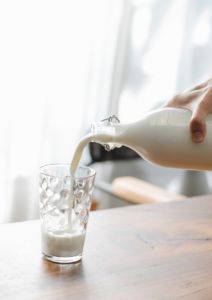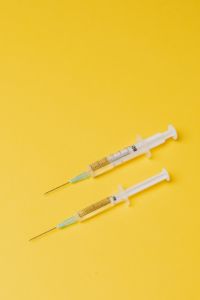
October 12-18 is Bone and Joint Health National Action Week. This week was established because bone and joint problems are some of the most common ailments experienced in the U.S. Musculoskeletal pain is not a disease of old age. Many sufferers are between the ages of 30 and 50. If you have a family history of back or joint problems, an autoimmune disease, or a job that requires a lot of sitting or heavy lifting, you may be at a higher risk.
In the past, people didn’t know their bones were thinning until they already had osteoporosis, and there were limited treatment options for joint pain. Today simple screenings can tell you if your bones need attention, and there are several non-invasive treatments for joint pain.
Here’s what you need to know about how to prevent and treat common musculoskeletal problems:

Preventing Osteoporosis
Bone thinning and osteoporosis can be treated after the fact with medications, and hormones but these treatments can have side effects and may not be effective for everyone. The best treatment for osteoporosis is prevention.
Eating a healthy diet that includes plenty of minerals and electrolytes and vitamins K and D is the first step. The earlier you start giving your bones nutrients, the better they will serve you later in life. Most bone development happens before the age of 30, so how you eat before that can affect your bone health later on. Teenage girls are especially at risk of not getting enough calcium and other nutrients.
Even if your diet when you were younger wasn’t great, it’s never too late to eat for your bones. Calcium, Vitamin D, phosphorus, and protein are all important nutrients for bone building. The body can only absorb about 500 mg of calcium at a time, so if you choose to take a supplement, a smaller dose multiple times per day is best. The ideal way to get vitamin D is to spend 10-15 minutes with your face and arms uncovered in the sun every day (without sunscreen). Many foods like dairy products, leafy greens, nuts, and beans contain minerals good for bone health. Getting sufficient protein will also help to build strong bones.
Natural Treatments for Bone-Thinning
People who are not at an increased risk for osteoporosis should get screened every five to fifteen years as recommended by their doctor. If you’ve been told that your bones are beginning to thin, there are natural things you can do to help. Catching thinning bones early is important for treatment.
Many factors affect bone health, including nutrition, medications, hormones, and activity level. A good diet and muscle-building exercises are the first-line prevention methods and can also treat early signs of thinning bones. You may also want to talk to a provider familiar with hormone levels to see if you need hormone therapy. Our hormones help our bodies use minerals like calcium to build bone. Certain hormone problems can encourage bone loss.
You may also wish to talk to your provider about changing medications if you take one associated with bone loss. Treating underlying conditions like autoimmune diseases and digestive problems can also help your bones stop thinning. People with IBS, Crohn’s disease, and Celiac disease have an increased risk of bone thinning. Controlling these conditions may help.
Joint Pain Prevention
Joint pain is often caused by overuse or acute injuries. All injuries cannot be prevented, but there are simple things you can do to decrease your risk. Using ergonomic positioning during tasks like typing and proper form while exercising can prevent overuse injuries. Wearing a brace during daily activities that can strain joints, taking frequent breaks, and resting sore joints can prevent pain from becoming chronic. If you have a joint that is bothering you, don’t wait to treat it. You can try at-home care like braces, wraps, and hot and cold therapy first. If the joint is still sore after a few days, it’s time to seek professional treatment. Getting treatment quickly will lower your risk for further injury and chronic joint pain.
Back pain is often caused by strain or arthritis in the joints that join the vertebrae. Regular chiropractic adjustments, good posture, and a healthy activity level can prevent back pain. While most people will experience acute back pain occasionally, it doesn’t have to become chronic. Again, prompt treatment can help prevent this. There are also controllable lifestyle factors that increase the risk of chronic back pain, including smoking and obesity. Taking care of your general health and keeping a healthy weight is good for all your joints, including your back.
Non-Invasive Joint Pain Treatment
There are several treatments that can not only reduce pain but can also help your joints heal.
Hyaluronic Acid Injections: HA injections are made from a natural substance that the body produces to lubricate joints and plump up tissues. Hyaluronic acid is like the body’s motor oil. It keeps your joints moving smoothly, fights inflammation, and prevents wear and tear on cartilage. Unfortunately, as we age, the body produces less of it, and the liquid in our joints becomes thin and less able to cushion and lubricate. Injecting HA into inflamed joints can reduce pain and inflammation and allow the body to heal itself. Over time, HA injections can even slow cartilage degeneration.
PRP Injections: Platelet-rich plasma injections are made from the platelets found in the patient’s blood. It is injected into a painful joint where it produces healing factors that increase blood flow, reduce inflammation and promote tissue repair. Since it’s made from the patient’s blood, side effects are practically non-existent, and the results can last for up to a year after the series of shots is complete. Patients with knee pain will benefit from a combination of hyaluronic acid and PRP injections.
Cortisone Shots: Cortisone shots have been around for a long time and effectively reduce inflammation and manage pain. They are best used for acute injuries that need a little help in the healing process. They can also be used to manage chronic pain, but PRP and Hyaluronic acid have fewer side effects and typically produce longer-lasting results.
Joint and Bone Health Treatments in Houston
At Vanguard Spine & Sport, we offer injections and other treatments for joint and back pain. We also provide lifestyle advice and nutritional counseling to help our patients avoid osteoporosis and painful joint problems. Schedule a consultation today to learn about your treatment options.




